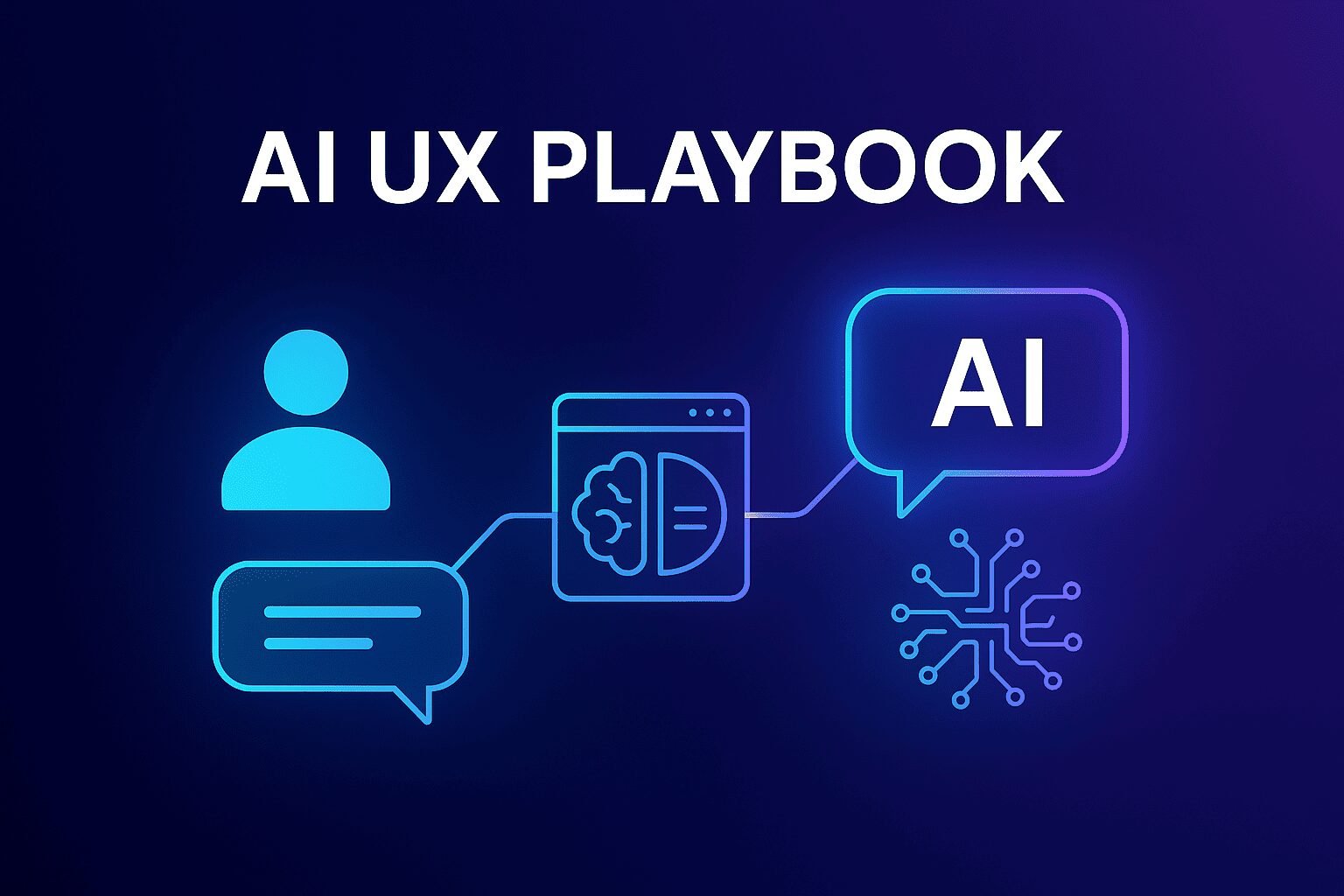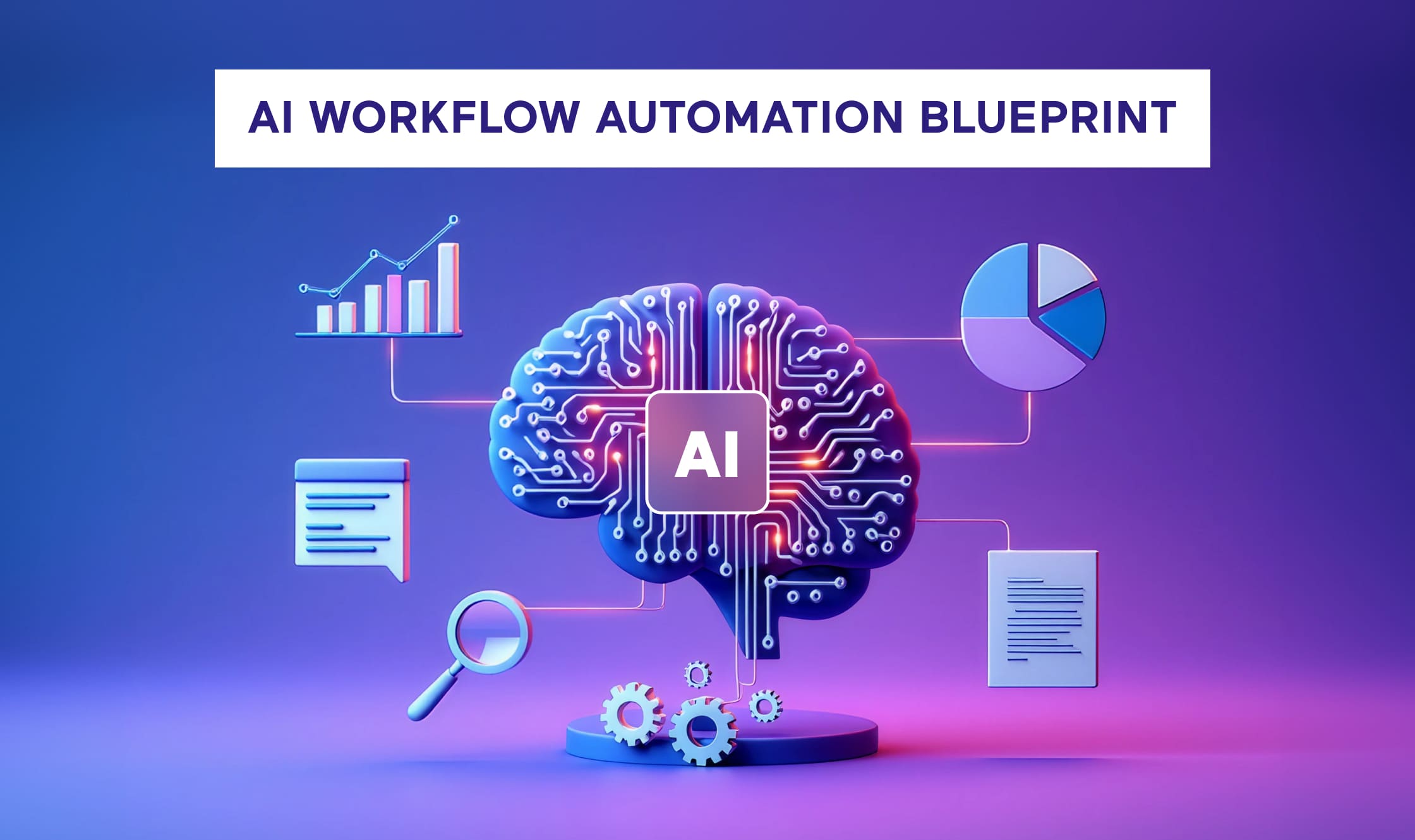Artificial intelligence (AI) is rapidly transforming industries, offering businesses unprecedented opportunities to optimize operations, enhance customer experiences, and drive innovation. However, successfully integrating AI into your business or understanding how to integrate AI into an app requires careful planning and execution. A recent McKinsey survey indicates that 65% of organizations are now regularly using AI in at least one business function, nearly doubling from the previous year. This whitepaper provides a step-by-step guide to help you navigate the AI implementation process and realize its transformative potential.
Define Clear Business Objectives
Before diving into AI technologies, it’s crucial to identify specific business challenges you aim to address. Don’t chase AI for the sake of technology. Instead, focus on areas where AI can deliver tangible value.
Key questions:
- What are our biggest pain points?
- Where are we losing efficiency or revenue?
- What opportunities are we missing?
- How can we improve customer satisfaction?
Examples include automating repetitive tasks, personalizing customer interactions, improving forecasting, or optimizing supply chains. Clearly defined objectives will guide your AI strategy and ensure alignment with your overall business goals.
Industry insight: According to a McKinsey survey, businesses that adopt AI-driven strategies are 1.5 times more likely to report revenue growth than their peers who do not invest in AI.
Assess Data Readiness
AI algorithms thrive on data. A successful AI implementation hinges on the availability of high-quality, relevant data. Assess your current data landscape:
Key Actions:
- Data Availability: Do you have enough data to train AI models effectively?
- Data Quality: Is your data accurate, consistent, and complete?
- Data Accessibility: Can you easily access and retrieve the necessary data?
- Data Security and Privacy: Are you compliant with data privacy regulations (e.g., CCPA or GDPR)?
If your data is lacking, invest in data collection and cleansing initiatives. Consider data augmentation techniques if you have limited data.
Choose the Right AI Technologies
The field of AI encompasses various technologies, including machine learning, natural language processing (NLP), computer vision, AI agents and robotics. Select the technologies that best align with your business objectives and data availability.
Categories:
- Machine Learning: Ideal for predictive analytics, classification, and regression tasks.
- NLP: Enables computers to understand and process human language, useful for chatbots, sentiment analysis, and text summarization.
- Computer Vision: Allows computers to “see” and interpret images and videos, applicable to object detection, facial recognition, and image analysis.
- AI Agents: Useful for task automation and improving customer support operations.
Case Study: Spiral Scout collaborated with a major mail carrier’s annual holiday initiative, which processes hundreds of children’s letters daily. By implementing AI-powered optical character recognition (OCR) and natural language processing (NLP), they automated data extraction from scanned letters, increasing the processing speed from 100 to over 3,000 letters per hour and reducing operational costs by 80%. Additionally, the accuracy rate improved from 95% to 98%, significantly enhancing data protection.
Develop a Proof of Concept (POC)
Before committing to a full-scale implementation, develop a Proof of Concept (POC) to test the feasibility and effectiveness of your chosen AI solution. Focus on a specific, well-defined use case. The POC will help you validate your assumptions, identify potential challenges, and refine your approach.
At Spiral Scout, we specialize in creating AI-powered solutions, such as autonomous AI agent frameworks and document processing tools, that streamline complex workflows and enhance operational efficiency. Our expertise ensures that your POC is tailored to your unique business needs, setting a solid foundation for successful AI integration.
Deploy and Integrate the AI Solution
Implement the AI solution within your business environment, ensuring seamless integration with existing workflows and applications. Effective deployment guarantees smooth data flow and system interoperability.
Integration Strategies:
- Leverage APIs and AI-as-a-Service (AIaaS) platforms to simplify adoption.
- Utilize cloud-based AI solutions to enable scalability and cost efficiency.
- Implement robust cybersecurity protocols to safeguard sensitive AI-generated data and insights.
Monitor and Optimize
AI models require continuous monitoring to maintain performance, relevance, and accuracy. Regular optimization ensures the solution adapts to evolving business needs and external conditions.
Optimization Techniques:
- Implement AI analytics dashboards to track and measure key performance indicators (KPIs).
- Regularly fine-tune models with updated data to enhance accuracy and performance.
- Collect and incorporate user feedback to refine and improve AI solutions.
Address Ethical Considerations
Developing responsible AI requires addressing key ethical issues such as bias, fairness, and transparency. Ensuring these aspects are managed builds trust and accountability.
Ethical Best Practices:
- Audit data and algorithms to detect and mitigate potential biases.
- Monitor that AI models deliver fair and equitable outcomes for all users.
- Maintain transparency by documenting and communicating how AI systems function, including decision-making processes and data usage.
Train Employees and Promote Adoption
AI success relies heavily on user adoption. Provide employees with comprehensive training on how to effectively use AI tools and clearly communicate how these solutions align with and support business objectives. Address concerns about job displacement by emphasizing AI’s role in augmenting human capabilities rather than replacing them.
Industry Insight:
A Deloitte study shows that investing in employee AI training enhances business outcomes by boosting productivity and engagement. Notably, 74% of employees are eager to learn AI tools to stay competitive in their careers.pressing eagerness to learn how to use new AI tools to stay competitive in their careers.
Scale AI Across Business Functions
After achieving success with initial AI projects, expand its implementation to other departments and business processes. By scaling AI, you can unlock new opportunities to enhance efficiency, foster innovation, and maintain a competitive edge.
Steps to Scale AI:
- Identify additional use cases where AI can streamline operations or provide data-driven insights.
- Collaborate with other business units to understand their specific challenges and tailor AI solutions accordingly.
- Ensure infrastructure scalability to handle increased data processing and AI deployment.
Example:
A retailer successfully using AI for inventory management can scale its application to include demand forecasting, enabling more accurate stock planning, and personalized marketing, enhancing customer engagement and sales.
Measure ROI and Business Impact
Evaluate the success of AI initiatives by measuring their impact on business goals. Focus on both quantitative (e.g., revenue growth, cost savings) and qualitative (e.g., customer satisfaction) outcomes.
Industry Insight: McKinsey estimates that generative AI could add the equivalent of $2.6 trillion to $4.4 trillion annually across various use cases, underscoring the significant potential for value creation.
Case Study: Sourcing Value faced challenges with inconsistent data formats, manual data processing, and inefficiencies in integrating large datasets. Spiral Scout implemented a scalable, automated solution using Wippy, enabling the client to upload diverse Excel files, train AI agents, and process data with minimal manual intervention. This “black-box” solution reduced processing time by 95%, cutting down tasks that took over a month to just 15 minutes. It improved data accuracy and minimized errors by 95%. The streamlined process freed the team to focus on higher-value tasks and enabled scalable, efficient data management for long-term growth.
Conclusion
Implementing AI in your business is a strategic endeavor that demands meticulous planning, execution, and continuous optimization. By adhering to best practices and leveraging insights from industry leaders, your organization can harness AI to drive growth, streamline operations, and maintain a competitive edge in today’s dynamic digital landscape.
At Spiral Scout, we specialize in AI consulting and software development, offering tailored solutions that address complex business challenges. Our services include AI technology consulting, custom AI software development, and seamless integration of AI-driven solutions into existing IT infrastructures. With over four years of AI innovation and a 98% client retention rate, we have delivered 15 successful AI projects, saving our clients over 95,000 hours.
Our expertise spans advanced recommendation engines, natural language processing applications, and predictive analysis tools, all designed to autonomously analyze complex data and integrate seamlessly into your existing systems.
Ready to transform your business with AI? Contact Spiral Scout today for expert consulting and development services.



